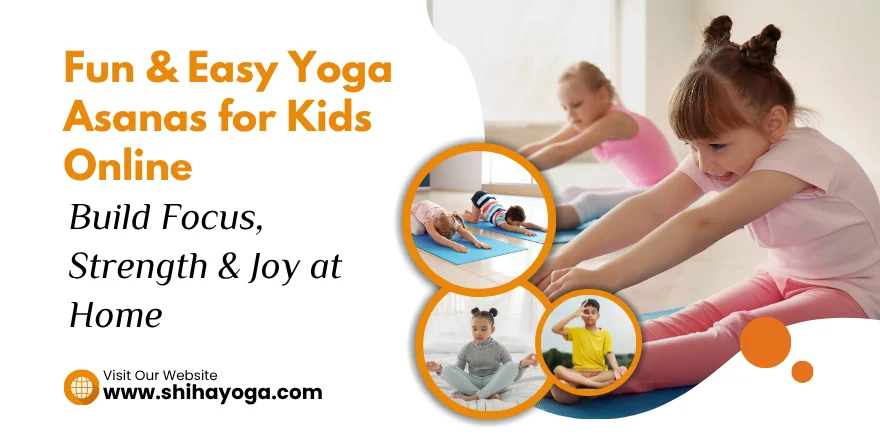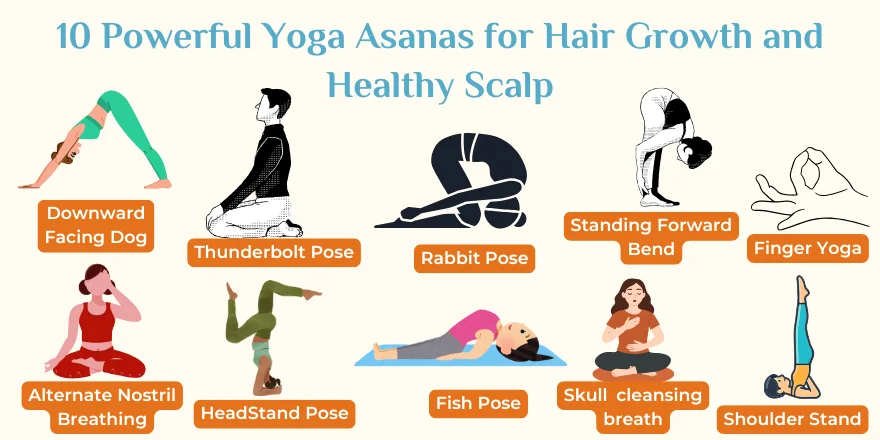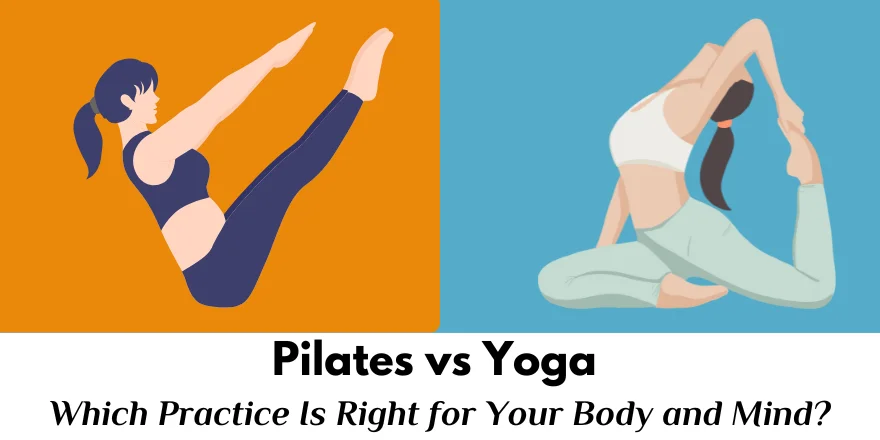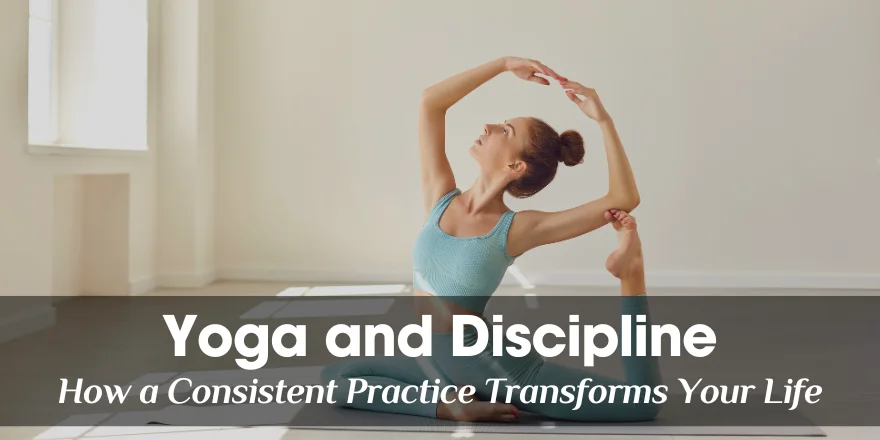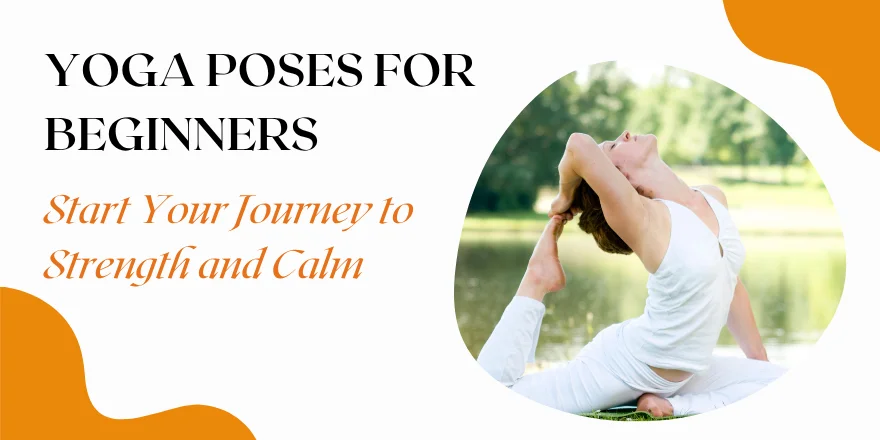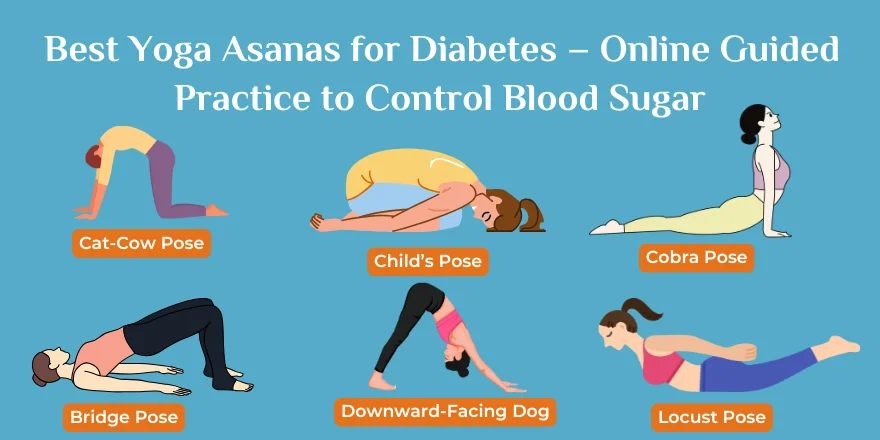Adding yoga poses for children to your kids daily schedule can be a tender, playful, and potent way to nourish your child’s physical, mind, and emotional development. And with live classes or guided sessions at home, you can help your little one build concentration, body awareness, strength, flexibility, and joy — all without leaving your living room.
In the blog we will:
- The advantages of yoga for children
- Share easy yoga asanas for kids (including simple yoga asanas for kids and yoga asanas for small kids).
- Advise you on how to plan on online kids’ yoga class.
- Offer suggestions to keep children safe and stimulated while performing.
- Also we will be giving you practical advice and encourage you to stick with it.
So let’s get down to it and make yoga fun for your kid!
Why Yoga for Kids? The Benefits
Before we dive into specific poses, a little understanding of why yoga is so great for kids might just be the motivation they need (and you!) to keep up with the practice.
- Stronger Focus and Concentration
Yoga teaches kids to focus on their breath, their alignment, and how they move through the poses. As a result, this training lengthens their ability to focus, which in turn rubs off on their schoolwork, their chores, and their creative undertakings.
- Calm and Emotional Control
Through breathwork and soft, flowing movement, children have a chance to slow down, observe their emotions and calm their thoughts. Yoga has been shown to help children cope with worry and distress.
- Strength, Flexibility & Balance
In addition to flexibility, yoga promotes strength for children (especially core, arms, legs), better balance and body awareness.
- Body Awareness & Mind-Body Connection
Children begin to notice their inner world — how tight or relaxed a muscle is, how long or short their breath is — and become more self-aware.
- Confidence & Self-Esteem
When kids nail a new posture or hold a difficult balance, it’s an instant confidence booster. This encourages self-confidence and also teaches perseverance.
- Better Posture & Healthy Habits
With screen time on the rise, a lot of kids are slouching, have weak core muscles, and/or poor posture. Beginners simple yoga asanas can neutralize these trends and also impart good movement patterns early on.
- Social & Emotional Skills
If in the company of a group or via online class, there is interaction and opportunity to follow guided teachings, cheer each other on, cultivate patience, listening, and teamwork.
Getting Started: Tips for Safe & Fun Kids’ Yoga Online
Because your child will be following an instructor online, here are some tips to help ensure that your child’s online yoga experience is a positive one:
- Pick a Suitable Time and Duration
Sessions should be no longer than 10-15 minutes for the younger children (3–7 years). For older kids (8–12 years), 20 to 30 minutes is fine.
- Make a Relaxed and Warm Environment
Place a soft mat or rug, make the space quiet, dim the lights if you’d like, and eliminate distractions. A simple background melody or nature sounds could assist.
- Imaginative Play and Themes
Children love stories, animals, superheroes or nature — get them to “be a tree,” “stretch like a cat,” or take a “jungle adventure.”
- Show, Encourage, Don’t Push
Demonstrate the pose yourself or with video. Be flexible — if a child can’t bend all they way over, or reach all they way up, have them use props or do a modification. Talk about a “feel good stretch,” not pain.
- Breathe & Play
Include breathing games, (such as “inhale like smelling a flower, exhale like blowing a candle”) or do the finger tracing or the fun sounds.
- Rest & Reflect
End with a restful pose (Child’s Pose or Savasana) and ask your child to pay attention to how she feels — calmer, more awake, lighter? Stubborn but Bendable Be Regular but Not Unchanging Strive for consistency in your practice (even if it’s just three times a week), but adjust based on need — occasionally your child will want to play rather than pose, and that’s fine.
- Adjust for Little Ones/Beginners
Use props like blocks, bolsters, blankets or walls to help with balancing or stretching. Don’t expect perfect alignment— prioritize comfort and fun.
12 Easy Yoga Asanas for Kids (Simple, Playful & Effective)
Following are few simple different yoga asanas for kids, which are tendency to be popular, safe and effective. As with everything else, but respect the comfort level of your child and let them go as fast or slow as they want.
| Pose | How to Do It | Benefits/Tips |
| The Child’s Pose (Balasana) | From kneeling, touch big toes together, descend to sit down on heels, reach out through arms or keep by sides, forehead on floor. | A resting pose for soothing, stretching the back, and inspiring deep breaths. It’s a go-to “reset” pose. |
Cat-Cow (Marjaryasana / Bitilasana) | Get on all fours (hands right under your shoulders and knees under your hips). Inhale, lift your belly, chest and chin as you drop your belly (Cow). Exhale to round your spine up and away from the floor, tucking your chin to your chest (Cat). | Good for warming up and spinal mobility and good for connecting breath to movement. |
| Downward-Facing Dog (Adho Mukha Svanasana) | From all fours, tuck heels and raise hips forming an inverted “V.” Press your hands and feet into the floor. | Tones arms, legs, and stomach, and stretches hamstrings and calves. For toddlers, knees can be bent or feet lifted. |
Butterfly Pose (Baddha Konasana) | With soles of feet together and knees wide, grasp either your feet or your ankles; flutter your knees like butterfly wings. | It opens up hips, inner thighs, promotes gentle rocking and is very inviting for young children. |
| Pose Tree (Vrijkshasana) | Stand tall, shift your weight on one foot, then place the other foot on the inner calf or thigh (not on the knee). Bring the hands to heart center, or, extend them overhead. | Focuses on balance, focus, and grounding. Beginners should use the wall for support. |
| Warrior II (Virabhadrasana II) | Step your feet wide from floor to standing. Turn one foot out, then bend that knee and stretch your arms out parallel to the floor. Look over the hand that is in front of you. | Builds strength in the legs, opens the hips, and increases confidence and balance. |
| Paschimottanasana (Seated Forward Bend) | Sit on the floor with your legs stretched out straight in front of you, bend at the hips and reach for your feet or shins, pa folding forwards gently. | Stretches the back, hamstrings, and helps calm. A strap can help if you need one. |
| Lion Pose (Simhasana) | On your knees, rest on your heels, spread fingers, open mouth wide and stick tongue out as you breathe out like a roaring lion. | Perfect for tension release and making sure you express yourself. Children are fans of this! |
| Legs-Up-the-Wall (Viparita Karani) | Lie on your back and extend your legs straight up a wall (or the side of the couch). Arms can optionally rest by your sides. | Mild inversion, soothing on the nervous system and good for rest and recuperation. |
| Balancing Table Pose | From a downward dog, bring your right arm forward, right now and left foreleg backward, left leg Backwards. Hold, and change the side. | It develops core strengthing, improves balance, and body awareness. |
| Bhujangasana – Cobra pose | Lie on your belly flat, put your hands under your shoulders, push your hands gently and lift your chest off the ground, extending your back. | Strengthens the back, opens chest, and is mild enough for kids. |
| Savasana (Corpse Pose) | Lie on your back, legs slightly apart, arms by your sides, palms facing up, relax your body, and breathe calmly. | Resting pose to consolidate practice, quiet mind and rest. Final relaxation for integration of class. |
You can pick about 5–7 poses per session, mixing standing, seated, balancing, and resting ones. Encourage kids to move between poses slowly and breathe along.
Sample Online Kids’ Yoga Session (15–20 minutes)
Here is a simple routine you may find helpful if you’re taking an online yoga class or just guiding your child:
Opening & Centering (2 min)
- Start with a quick game of breathing: “Smell the flower / Blow the candle.”
- Do gentle stretches (neck rolls, wrist circles).
Warm-up (2 min)
- Cat-Cow, Spinal Twists, gentle side stretches.
Main Poses / Flow (8–10 min)
- Tree Pose (right side)
- Balancing Table Pose (right side)
- Warrior II (right side)
- Change to left side
- Butterfly
- Seated Forward Bend
- Cobra
- Downward Dog
Balancing & Challenge Pose (2 min)
- Try one pose that is a little bit more challenging (such as balancing table hold, one-legged tree, or a playful variation).
Cool-down & Rest (2–3 min)
- Child’s Pose
- Leg-Up-the-Wall
- Savasana (invite them to notice how their body feels)
- Closing Reflection (1 min)
Have someone ask “What felt strong? What felt easy? What do you like most about your body today?”
Shape the closing with a slow stretch or self-hug. You can also sprinkle in playful elements such as:
- Count breaths
- Pretend to be animals, or trees in some poses
- Soft background music or nature sounds
- Small breaks, “freeze game,” or wiggle breaks
Once children become more confident, you can add more variety, transitions, or partner poses.
Tips to Keep Kids Engaged & Motivated
- Short & Sweet: Younger children are easily distracted—keep transitions quick, poses short, and energy level high.
- Use Stories: “We’re a tall tree reaching for the sky,” or “We’re butterflies dancing in the wind.”
- Pose Together: When you do the pose with them, you create connection and build confidence.
- Celebrate Success: Name effort (“You held that tree so strong!”) not perfection.
- Change up Your Practice: Switch up the pose sequences, incorporate props (blocks, blankets), experiment with themed sessions (ocean, jungle, space).
- Promote Exploration: When they’re ready, encourage kids to create their own pose or variation.
- Capture or Playback: If you’re teaching online, you can capture a short class they can do at home on their own.
- Bring a Friend: If you’re more of the group- or partner-class type (or friend-drawing-in online for some added cheer and social encouragement).
Safety & Precautions
- Make sure the child is hydrated and has urinated before beginning.
- Use a non-slip mat or a soft surface.
- Don’t push into pain; tell people to try to “gently stretch” and not to force.
- For children with medical conditions (such as bone or joint problems, asthma, scoliosis), check with your pediatrician and/or a qualified yoga instructor before beginning.
- Monitor for tiredness or fidgeting—stop or rest as necessary.
- No advanced/strong poses (long backbends, inversions such as headstand) until you have built the right foundation.
Encouraging a Lasting Practice
Consistency and positivity are key. Establish a habit of practicing (10 minutes) 3-4 times per week. Celebrate small successes, listen to the child’s feedback and slowly deepen their awareness and capacity.
Eventually your child may view yoga as their time to pause, reset, stretch, and reconnect with their body. You’re building not just strength or flexibility, but resilience, calm, and confidence.
At Shihā Yoga, our kids yoga classes online are designed just for that: bringing fun & simple yoga asanas for kids right to your living room. Should you be interested in exploring live classes or recorded sessions, look them up on our site (shihayoga.com).
Start your child’s yoga journey — playful, gentle, steady.
Frequently Asked Questions On Yoga Yoga Asanas for Kids
1. How old should children be to practice yoga poses?
Children as young as 3 or 4 can start with simple yoga, though up to this age they’re generally not thinking about yoga as much as breathing, stretching and playing on the mat. Toddlers will excel at poses such as Child’s Pose and several playful movements. As they get older, you can introduce more formal poses little by little. The important thing is to make it fun, brief and flexible. Don’t push—emphasize movement that is natural, comfortable and inquisitive. Always gauge the child’s readiness and interest level and avoid a strict routine.
2. How many times a week should children do yoga?
It is best for young children (3–7 years) to practice three times per week with short sessions (10–15 minutes). 4-5 sessions of 15-25 minutes for children aged 8-12 years. Less is more: established, mindful practice will trump one-off marathon sessions any day. You can also sneak mini stretches or breathing pauses into your routine (pre-school, post-screen time). Promote body listening — on tired, hectic days, do a gentle stretch or restorative posture.
3. What do I do if my kid does not have a perfect reach or balance?
That’s perfectly normal! Yoga is not about being perfect, it’s about being. Use cushions, blocks, straps or the wall, to support. To help with balance poses, let them lightly hold onto a wall or be near a piece of furniture. Tell them to bend their knees or shorten the stretch if they need to. The intent is simply to help them feel safe, comfortable and curious, rather than frustrated,” she said.
4. Can yoga benefit children with attention or behavioral problems?
Yes—many studies indicate that regular yoga practice may enhance focus, attention control, and impulse control and decrease anxiety in children.Breathwork, movement, and self-observation—all have been proven to calm the nervous system and increase mindfulness. Raja yoga is not a panacea, but it can serve as a precious auxiliary means, especially if brought into combination with positive habits, consistency, and possibly with other forms of therapy or assistance. Always seek professional help if necessary.
5. Do children need flexibility, strength or any prerequisites to get started?
No prerequisites required! Yoga for kids is flexible. Kids are born with natural flexibility, but yoga builds strength and control gradually. All that is necessary is safe space, guidance and a willingness to explore. Begin with basic, simple postures and then advance to more complicated ones. Recommend they rest, play, and listen to their own bodies. Establishing a comfort level in their bodies, breathing and moving is much more important than “perfecting” a posture.


